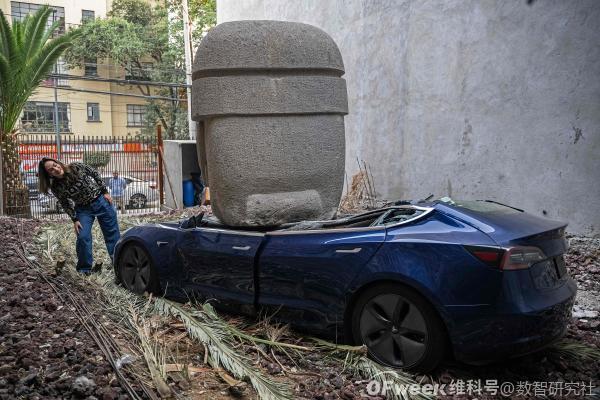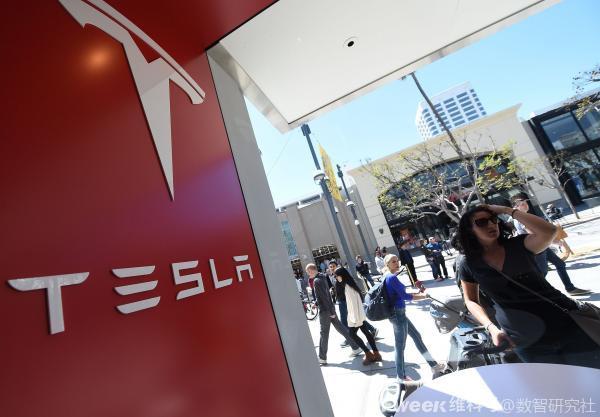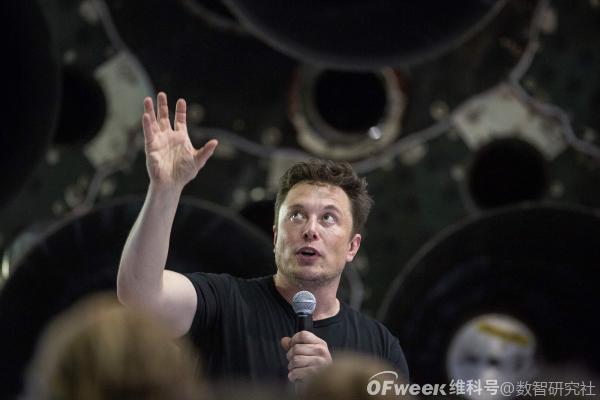Tesla is mired in a price war, losing $730 billion overnight
![]() 07/25 2024
07/25 2024
![]() 499
499

In the intensely competitive year of 2024 for new energy vehicles, Tesla has also been ruthlessly dragged into the quagmire of a price war, with declining sales and lower gross margins per vehicle being bad news. Nevertheless, Tesla remains formidable, having established its position with the Model Y/3. In the hearts of Chinese consumers, it is still a benchmark, especially considering its affordable new models haven't even debuted yet.
A negative earnings report erased all of Tesla's gains since the beginning of 2024.
On the evening of July 24, Beijing time, Tesla's shares plunged as much as 12.85% to $214.71 per share at the opening bell, erasing $101 billion (approximately RMB 734 billion) in market value, which just happens to be the same amount as its long-time rival BYD's market value in A-shares.
From a financial perspective, Tesla's second-quarter total revenue increased by 2%, while automotive revenue declined by 7%, and net profit plummeted by 45%. Excluding the sale of carbon credits, the automotive gross margin was 14.6%, lower than market expectations.
Behind this revenue growth without profit increase, we find that in the extremely competitive global new energy vehicle market, Tesla has inevitably been dragged into the quagmire of a price war and cannot extricate itself. Coupled with the lack of a release date for new affordable models, and insignificant revenue from driving-related services, delivering such a financial report may have been "expected."
As Tesla's CEO, Elon Musk remained defiant. During the earnings call, Musk attempted to tell a new story about autonomous driving to regain investor confidence. By promising that "FSD is expected to enter China and Europe by the end of 2024," investors and consumers once again found themselves eagerly anticipating.
Behind the 45% decline in net profit
In the second quarter of 2024, Tesla delivered a total of 444,000 vehicles globally, a decrease of 22,000 units compared to the same period last year. This sales decline led to a 9.3% decrease in core automotive sales revenue, totaling $18.53 billion.
Upon closer examination, the decrease in Tesla's vehicle deliveries was only 4.3%, but the decline in sales revenue was more significant. "Digital Intelligence Research Institute" discovered that Tesla is making less money per vehicle. In the second quarter of 2022, Tesla earned $53,670 per vehicle sold, but prices have continued to drop, reaching a record low of $41,700 per vehicle in the second quarter of 2024.
Over the past two years, Tesla has failed to update its model lineup, so the decline in revenue per vehicle is a result of its older models having to lower prices to compete in the price war. Interestingly, despite the pricing strategy, sales in the second quarter of 2024 actually decreased.
Simultaneously, the pricing strategy has also impacted the company's gross margins. Data shows that in the second quarter of 2022, Tesla's gross profit per vehicle was $13,800, which has now dropped to just $5,784. This gross profit per vehicle has also set a new record low.

Therefore, it's not surprising that Tesla's net profit fell sharply by 45%.
It's worth noting that Tesla, which was once the only profitable new energy vehicle company for a long time, is no longer the same in terms of profitability amid the intense price war. In the third quarter of 2023, Tesla's gross margin was above 25%, with automotive sales gross margin also above 25%. However, by the second quarter of 2024, Tesla's overall gross margin had dropped to 18%, while automotive gross margin had fallen to 13%, both setting new record lows.
Notably, in this "predicament," Musk has had to wield the axe of cost reduction and efficiency enhancement. In April, Musk announced plans to lay off 10% of the global workforce.
Without new models, it's all for naught
I'm not sure if anyone has noticed that on the streets of first-tier cities like Beijing, Shanghai, Guangzhou, and Shenzhen, the proportion of Teslas has significantly decreased in recent years, diluted by products from Chinese brands like BYD, NIO, and Li Auto. Recall that before China's "new forces in automobile manufacturing" and BYD rose to prominence, the streets of these cities were dominated by Teslas.
Behind this phenomenon is the fact that China's new automakers basically launch new products and hold press conferences every year, while Tesla, as a foreign player, hasn't introduced new models for several years. Can the market still favor Tesla under such circumstances?
Of course, that's just one aspect.
In previous years, especially with the mass production of Tesla's Model Y and Model 3, as well as the commissioning of the Shanghai factory, production soared. At that time, China's "new forces in automobile manufacturing" hadn't yet matured, and the country also provided preferential policies to Tesla. However, times have changed. BYD has surpassed Tesla to become the world's largest new energy vehicle brand in terms of sales, covering low-, mid-, and high-end models. Moreover, as a domestic new energy vehicle brand, localization efforts are undoubtedly better.
Another factor that cannot be ignored is the potential impact of increased tariffs on Chinese automakers by foreign countries, which may also affect Tesla's position in China. As a crucial market globally, any changes in the Chinese market will undoubtedly have a significant impact on Tesla.
Getting back to the point, Tesla has achieved impressive results solely relying on the Model 3 and Model Y, but to continue achieving remarkable results and market attention, new models are undoubtedly needed. There are reports that Tesla is about to launch an affordable model named Model 2 (not yet confirmed), with a price tag of less than RMB 200,000.

However, Tesla has not officially announced more details about this model or its release date. The market eagerly awaits Tesla's new affordable model, but without a specific timeline, the Model 3 and Model Y will have to continue shouldering the burden.
Furthermore, when Tesla's new affordable model is launched, the global market, especially China, will undoubtedly witness a fierce battle. It's worth noting that China's "new forces in automobile manufacturing" often benchmark Tesla during their press conferences, claiming, "Our feature is much more advanced than Tesla's..."
In the view of "Digital Intelligence Research Institute," the biggest rival may be Xiaomi Automobile. During the launch event of its first model, the SU 7, Xiaomi Automobile repeatedly benchmarked Tesla. As a competitor, Xiaomi's SU 7 Standard Edition, priced at RMB 215,900, is RMB 30,000 cheaper than the Tesla Model 3.
Xiaomi Automobile's biggest trump card, besides building a "Mi-Porsche" from scratch in just three years, is its competitive pricing. Just imagine, during the launch event, Xiaomi managed to undercut Porsche's prices to around RMB 200,000. By the time Tesla's affordable model is launched, Xiaomi Automobile's "Wuling Hongguang version" may have already captured the Chinese market.
Nowadays, Tesla's only advantage lies in its profitability. The mention of FSD entering China and Europe during the earnings call, if not accompanied by the prompt introduction of new models, will be in vain, according to "Digital Intelligence Research Institute." While FSD has higher gross margins, its impact on Tesla's revenue is still quite limited. Tesla is no longer the same company it was a few years ago. Although it remains a benchmark in the automotive industry, with increasing options in China, the reasons for choosing Tesla need to be more refined. Otherwise, why would consumers continue to choose Tesla? Tesla's charm cannot last forever.








